wikiHow is a “wiki,” similar to Wikipedia, which means that many of our articles are co-written by multiple authors. To create this article, 93 people, some anonymous, worked to edit and improve it over time.
wikiHow marks an article as reader-approved once it receives enough positive feedback. This article received 17 testimonials and 89% of readers who voted found it helpful, earning it our reader-approved status.
This article has been viewed 337,534 times.
Learn more...
Organizing a bake sale is an excellent way to raise money, especially for charity or something new your community needs money for. Bake sales are easy to organize, easy on the pocket, and fun to do. With nothing more than a small team of people, a dedication to a good cause, and some planning and baking, you can have a successful bake sale of your own.
Steps
Getting Started
-
1Have a cause. Most bake sales are for raising money for a charity or cause. Be sure you and your customers understand who or what you are raising money for. Have posters or other advertising materials. It may help to make pamphlets or other media presentations available to explain your charity. This is a great opportunity to promote your cause, too.[1]
- Put out a jar for tips or donations. If you are raising money for a cause, allow people to donate without buying. Some people may not be hungry, or cannot buy sweets due to dietary restrictions, but they still might want to support your organization.
- Make sure you know how to send your profits to your charity.
-
2Make your team. Get your friends and family to help. If this is a fundraiser for a school, get the students involved. Let the kids have the option of participating in the fundraiser by baking goods with their parents to sell in the bake sale, and give them appropriate responsibilities.[2]
- Make clear what the cause is, when the bake sale is, and have reasonable shifts available.
- How many volunteers you will need will depend on the size of your proposed bake sale. A small bake sale may be easily handled by one experienced volunteer. However, a large bake sale may need several people to coordinate helping customers, the cash box, setting up and taking down, and baking.
- You might want to make one person in charge of organizing the volunteer bakers, one person in charge of renting the venue and the equipment needed, and one person in charge of publicizing the event.
Advertisement -
3Decide on a venue. Generally, you want to be in a high traffic area. For instance, have your bake sale at a well-frequented public spot or in a school or college. If the bake sale is for your school, ask the Student Union, administration, or other appropriate staff for possible venues on the school grounds.[3]
- Sometimes retail stores will be happy to have a booth set up nearby.
- Community events, such as festivals and special events like street fairs, outdoor public concerts, and other big public events are all excellent choices.
- At schools, plays, concerts, open houses, sporting events, parent nights are excellent bake sale opportunities.
- Make sure that it is legal to hold at the spot you choose, and get permission from the appropriate authorities, if applicable.
- Be sure you have a "rain site" to do the bake sale indoors or under a tent, in case the weather turns sour.
-
4Get all the equipment you need. You may be lucky and have a table and chairs available already and a sign made up already--especially if this is a yearly event. But if you do not, you will need to plan. You may need:
- Booths or tables
- Card tables or folding tables
- Some sort of awning, like a pop-up pavilion or gazebo to protect from rain or sun
- Tablecloths
-
5Make sure you have big, bold signs that will attract customers.
-
6If you're in a public area, make sure you have a permit if needed.
- Decorations and signs to grab attention
- A cooler and ice to keep items like drinks cold
- A garbage container and garbage bags for cleanup
- Folding chairs
- Crock pots to keep liquid items warm
- A cash box. You need to keep your funds in some sort of container. Be sure it has changed for large bills!
-
7Decide on the time. The best way to ensure a large number of potential customers at your bake sale is to have it coincide with another event. Or, if your bake sale is for your school, make sure you have it during a time when the greatest number of parents and kids can attend, such as a weekday evening. Some ideas for events to place your bake sale near include: elections, PTA events, school games, and community events.[4]
- You will also want to make sure your date is in the sweet spot between being so soon that not enough people hear about and so far that people forget about it. Somewhere around two weeks from when you announce it should work.[5]
Planning the Baked Goods
-
1Assign the baking work. Make sure you assign your volunteer bakers certain items to make through something like a sign-up list, so you don't wind up with too many of some goods, and not enough of others.
- If many people in an organization are baking, ask them to package things in sale-size quantities, perhaps two to three cookies to a package or one cupcake or larger item.
-
2Give instructions on how to pack the goods. Give the volunteer bakers a specific method for packaging their finished goods. It's a good idea to have every item individually wrapped in plastic wrap or a plastic bag, to avoid contamination that might cause allergic reactions.
-
3Give instructions on what to label on the packaging. All the goods should have the ingredients listed. Many people (especially children) have food allergies and sensitivities and dietary preferences. Helping a list of ingredients people stay healthy and happy while supporting you. Knowing that a cookie has nuts in it or not may make a big difference.
- An index card by the dish is an easy way to do this. You can also put sticky labels on plastic bags.
- Marking items with common allergens can be helpful (tree nuts, strawberries, peanuts, etc.).
- Also mark foods that may be a good choice for certain people, such as gluten-free brownies, Kosher treats, vegan cookies, or nut-free items.
-
4Have a variety of types of baked goods. Try to include some healthy options too, instead of just cupcakes and pie. Not everything has to be sugary at a bake sale. Fresh homemade bread, pretzels, and corn muffins can sell too.[6]
- Don't forget unique twists on traditional baked goods, too! For example, try offering pieces of banana cake in addition to plain white or chocolate cupcakes.
-
5
Preparing for the Event
-
1Coordinate the work. Decide who is going to do what once you start the event. Delegate people to retrieve and set up the equipment, someone to organize the goods and volunteers once they arrive, and someone to keep track of the money.[9] Invite your friends that will contribute and try hard. Make sure you have an adult around so if you need any help, they'll be there to help.
-
2Decide on an area you'd like to sell at. If you live in a suburb, consider moving the sale to the corner of your street, or the front of the neighborhood. Move your set up to a reasonable area.
-
3Publicize the event. Design attention-grabbing and colorful media with the date, time, place, and cause being supported. Design and share posters online or put paper ones up in well-frequented areas.[10]
- If you are selling at a school, have your bake sale announced over an intercom, in the daily notice or school paper, or whatever is available.
- Advertise your organization through your clothes. If you are raising funds for your scout troop, for instance, wear your uniform.
-
4Make goods. Bake sales are a good opportunity to bake a variety of goodies. A bake sale needs baked items, which ideally will be homemade. Have all your baking volunteers bake the goods the day before the sale, to ensure maximum freshness.[11]
- You could bake the items yourself and this is usually the cheapest way. Divide the baking between many members, if possible.
- Alternatively, buy them from a local bakery or shop. This is particularly effective if people don't usually have access to such goods, such as at a high school. It also is easier for people who can't cook, or don't have the time.
-
5Get drinks to sell as well. A lot of people like to have a bit of liquid to wash down sugary treats, and it is an additional chance for you or your group to earn a bit of extra money.
- Coffee, tea, iced tea, lemonade, water, and soda are all good options. However, use common sense: hot coffee probably will not sell well on a hot summer day.
Having the Bake Sale
-
1Set up the event. Set up the tables, donation boxes, and signs. Keep track of all the volunteers arriving, and let them know where they should set up their goods. Bring a supply of small paper plates, paper towels, plastic forks, napkins, cups if you are serving drinks that require them, and plastic wrap, bags, or foil. It's best to keep these to a minimum, as they cut into profits and create waste.[12]
- All these tasks can be delegated to some of your team members. Don't try to stretch your efforts too thin by putting yourself in charge of too many tasks.
-
2Get the party going. Double-check that everyone is where they should be, and all the tables are full of delicious baked goods, and start selling. If you planned it well enough, this should be the easiest step of all. Consider getting some music going to make the atmosphere more fun and welcoming.[13]
- Have a cash box and start with a reasonable amount of change in it. Write down the amount so you can calculate how much you've earned at the end. Keep the cash box safe throughout the event.
- Thank the customers for their support as they leave the event.
-
3Be polite when greeting the customer. "Hey! How are you? Try some delicious treats at a low price!" If the customer decides to buy a cupcake, for example, consider packaging it in a cute cardboard box.
-
4End the event. Have a specific time when the event will end. Once it reaches that time, politely let everyone know that the bake sale is wrapping up. Let all the customers currently buying goods finish before you start packing up.
- Once the event is over, count the money earned and thank all the volunteers for their help. Help them pack up their unsold goods.
-
5Leave the area clean. Be courteous and leave your area as clean or cleaner than you found it. Remove all the tables, chairs, and other equipment rented for the event. Clean up and throw away all the trash. Ask some of the volunteers to help you with this.[14]
-
6Send the leftovers somewhere. Let the volunteers know that they are of course free to take their leftover goods home with them, but also provide an option for them to donate their unsold baked goods. Contact a local food shelter or nursing home and ask them if they would like to take your unsold goods. Then ask one of the volunteers to deliver the goods, or do it yourself, as soon as possible, so they're still fresh.[15]
Community Q&A
-
QuestionWhat are good hours for a bake sale?
 Community AnswerIt depends on what day you choose to do the bake sale. If you are doing it during the weekday, you might want to hold it around lunchtime. If you are doing it on a weekend, then anytime between 10am and 6pm would be good. Never hold your bake sale after it gets dark, however.
Community AnswerIt depends on what day you choose to do the bake sale. If you are doing it during the weekday, you might want to hold it around lunchtime. If you are doing it on a weekend, then anytime between 10am and 6pm would be good. Never hold your bake sale after it gets dark, however. -
QuestionWhere can you have a bake sale?
 Community AnswerYou can ask your school administration if you can have it on school property or on the sidewalk outside. If your house is on a street with a lot of foot traffic, you can have the bake sale in front of it.
Community AnswerYou can ask your school administration if you can have it on school property or on the sidewalk outside. If your house is on a street with a lot of foot traffic, you can have the bake sale in front of it. -
QuestionI can't find anywhere to hold the bake sale.
 Community AnswerIt is best to have it in a cool but sunny location, like the park or during a public event with cover. You could also try a local school fair, a front yard or a friend's place if they have a better location.
Community AnswerIt is best to have it in a cool but sunny location, like the park or during a public event with cover. You could also try a local school fair, a front yard or a friend's place if they have a better location.
Warnings
- Be aware of food safety. While most baked goods are fine at room temperature, some food can be dangerous if not kept refrigerated.⧼thumbs_response⧽
- Keep allergy information and ingredients lists visible. Customers may have allergies and you want them to know whether they can eat the treats they buy.⧼thumbs_response⧽
References
- ↑ https://knowhownonprofit.org/how-to/how-to-organise-a-charity-bake-sale
- ↑ http://www.foodservicewarehouse.com/blog/top-ten-tips-for-organizing-a-bake-sale/
- ↑ https://www.ptotoday.com/pto-today-articles/article/664-bake-sales-step-by-step
- ↑ https://www.ptotoday.com/pto-today-articles/article/664-bake-sales-step-by-step
- ↑ http://www.foodservicewarehouse.com/blog/top-ten-tips-for-organizing-a-bake-sale/
- ↑ http://www.jsonline.com/features/food/tips-for-a-successful-bake-sale-b99340953z1-274476711.html
- ↑ http://www.foodservicewarehouse.com/blog/top-ten-tips-for-organizing-a-bake-sale/
- ↑ http://www.jsonline.com/features/food/tips-for-a-successful-bake-sale-b99340953z1-274476711.html
- ↑ https://www.amnesty.org.uk/sites/default/files/student_fundraising_guide_how_to_plan_a_bake_sale.pdf
- ↑ https://www.ptotoday.com/pto-today-articles/article/664-bake-sales-step-by-step
- ↑ http://www.foodservicewarehouse.com/blog/top-ten-tips-for-organizing-a-bake-sale/
- ↑ https://www.ptotoday.com/pto-today-articles/article/664-bake-sales-step-by-step
- ↑ https://www.ptotoday.com/pto-today-articles/article/664-bake-sales-step-by-step
- ↑ https://www.ptotoday.com/pto-today-articles/article/664-bake-sales-step-by-step
- ↑ https://www.ptotoday.com/pto-today-articles/article/664-bake-sales-step-by-step
About This Article
To plan a bake sale, you’ll need to find an appropriate time and location and bake a variety of desserts. Common venues include shopping malls, community centers, schools, and street fairs. Find out if the venue can provide a table and chairs or if you need to bring these yourself. You’ll also need to bake or buy a variety of popular baked goods, like cupcakes, cookies, and pies. If there’s a group of you organizing the sale, assign a dessert to each person to bring. Then, decide how much you're going to charge for the desserts, like 1 dollar each. You can also put a donation box on the table for people who don't want a dessert but want to support your cause. For more tips, including how to advertise your bake sale on social media, read on!
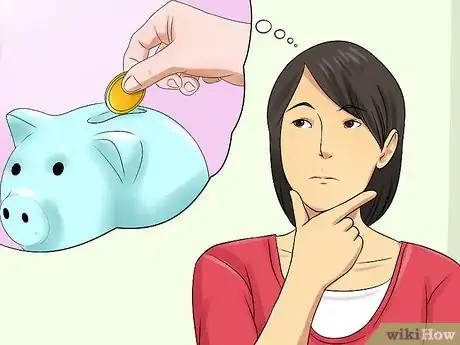

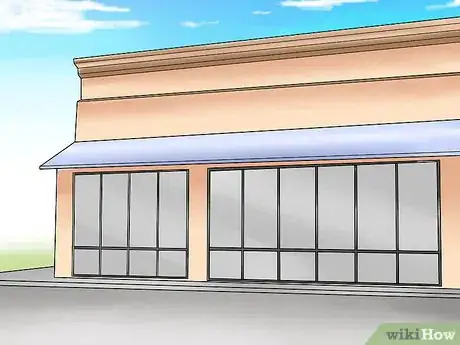
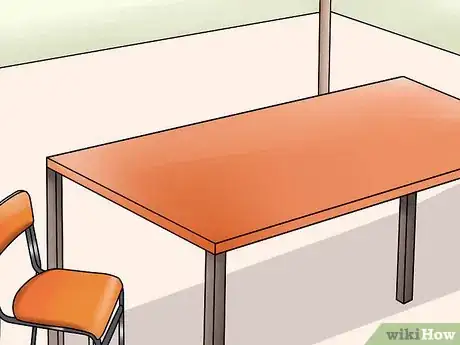

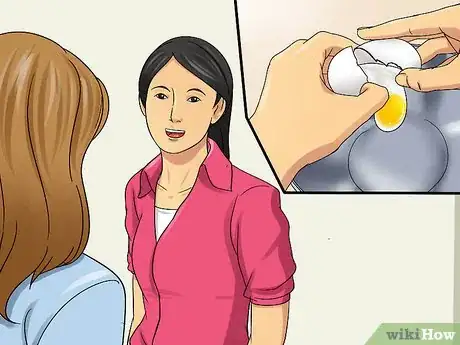
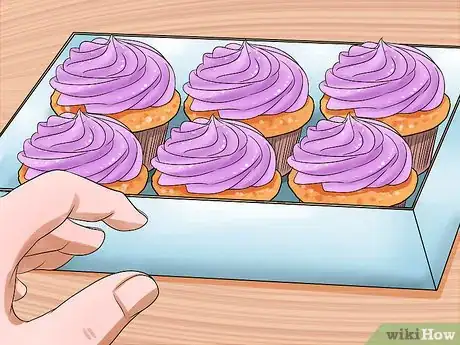
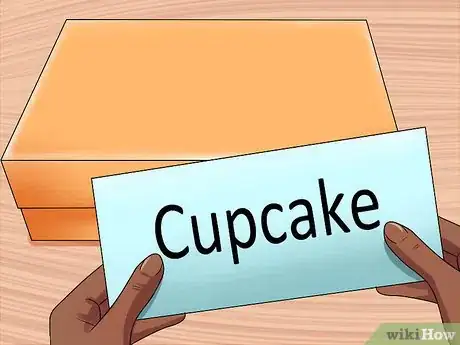
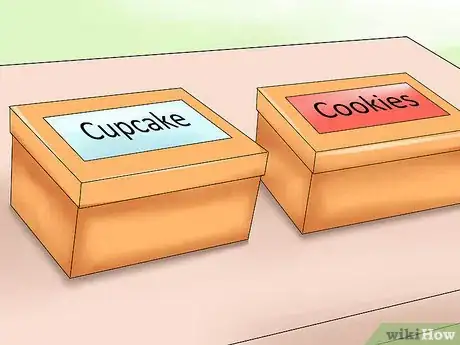
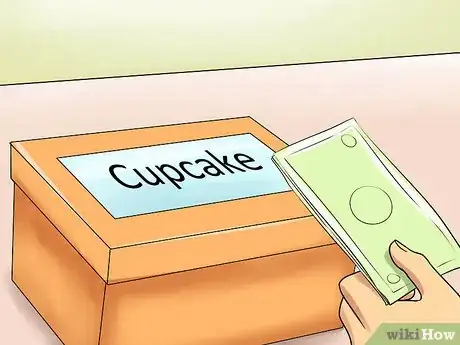
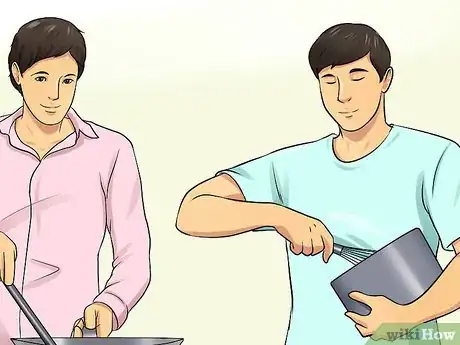


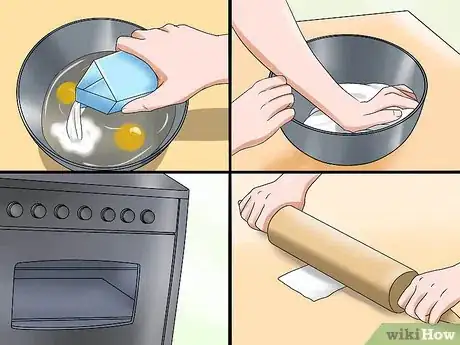
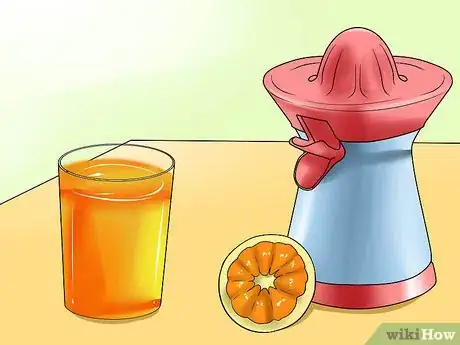
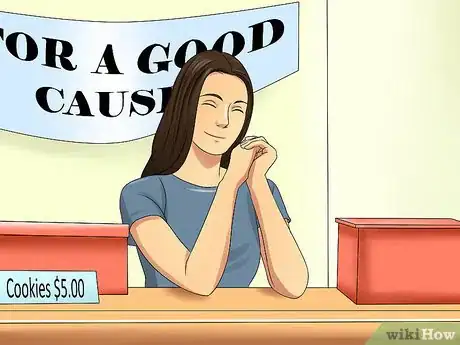


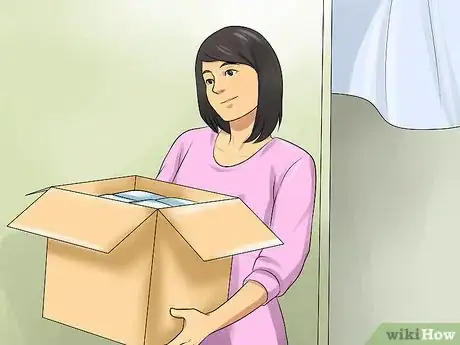
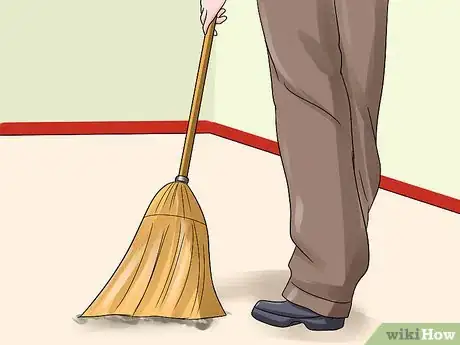


-Step-9.webp)
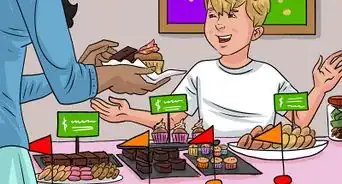

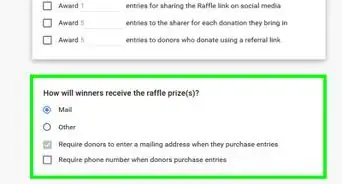






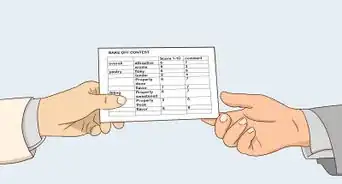










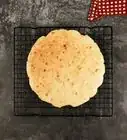

-Step-9.webp)



































